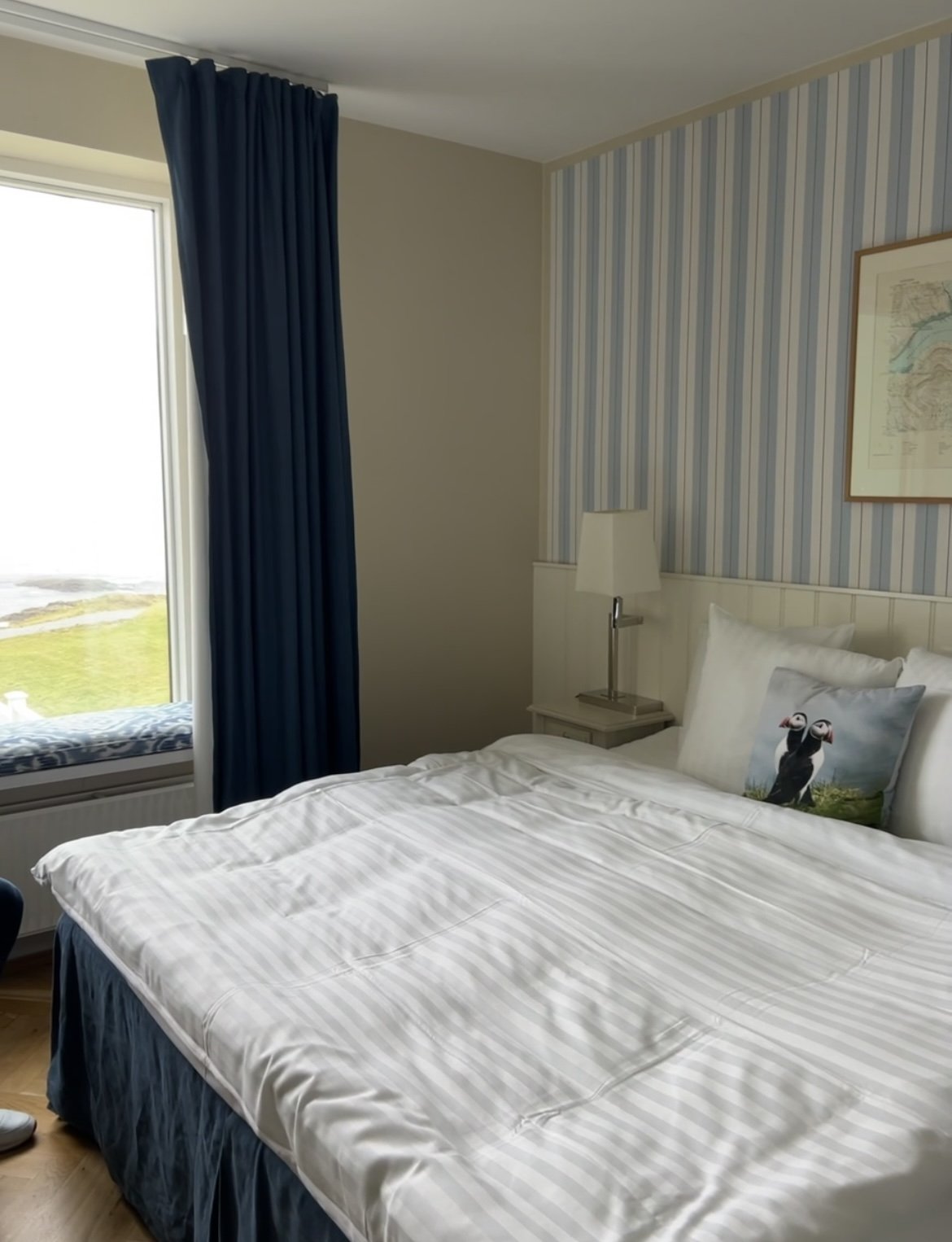A Guide to the Faroe Islands
Introduction:
The Faroe Islands, an autonomous territory of Denmark, are an 18-island archipelago situated between Iceland and Norway in the Atlantic Ocean. The islands are widely recognized for their breathtaking and wild landscapes, as well as their rich and diverse culture. Each island offers distinct features, including towering cliffs, vibrant waterfalls, and serene fjords. There are few places that rival the uniqueness of the Faroe Islands.
Due to their geographical isolation, the islands have preserved many historical customs, making them attractive to visitors seeking both adventure and tranquility. The picturesque villages, adorned with colorful houses, provide a glimpse into the daily lives of the Faroese, highlighting the community's strong connection to nature. Outdoor enthusiasts will find an abundance of hiking trails, while those preferring a calmer experience can enjoy stunning vistas from various vantage points. There is truly something for everyone.
Continue reading to find my recommendations:
Where to stay
Where to eat
What to do
My review of the Faroes
Frequently asked questions
DISCLAIMER: This guide was created from my trip taken in September 2024. Please use this as a guide only and make adjustments based on the time of the year, day of the week, and length of time you will be visiting.
Where to stay
Havgrim Seaside Hotel 1948
The Havgrim Seaside Hotel 1948 is a 14-room boutique hotel located in the capital, Tórshavn. Situated along the picturesque shoreline overlooking Nolsoy Island, this hotel is a welcoming retreat for guests seeking relaxation after a day of adventure. The hotel features a blend of vintage charm and modern amenities, providing a unique experience for every type of traveler.
Guests can indulge in delicious breakfast, afternoon tea, and spend time in the garden hot tub during their stay. There is also parking on site, which is very ideal after a full day of driving and exploring the islands.
Which room to book:
We stayed in room 202, which was their Deluxe Room. The room was spacious, clean, designed beautifully, and had a really comfortable bed. We did have a view of the water and it was lovely (FYI- some of the Deluxe rooms do not have a sea view so be sure to discuss this at booking if this is important to you).
If you are looking for something more luxurious and pricer, I would recommend staying in their Commodore Suite, which has a wall of windows overlooking the water. It is magnificent.
We loved our experience at Havgrim Seaside Hotel. The service was so excellent and welcoming. We will definitely stay here again on our next trip to the Faroe Islands.
Address: 14 Yviri við Strond, Tórshavn 100, Faroe Islands
Book here: havgrim.fo
Where to eat:
DISCLAIMER: Some of these locations are not open every day so be sure to check the restaurant hours before you go.
Breakfast:
1. Paname Café (Tórshavn)
Paname Café is a lovely, turf-roofed restaurant located in an old bookshop in central Tórshavn. It is the perfect, cozy place to start your day. Their homemade pastries, breads and organic coffees are some of the best in the city.
What to order: Carrot cake, banana cake, smoked salmon sandwich
2. Breyðvirkið (Tórshavn)
Breyðvirkið is an incredible bakery in the capital. They serve up some of the best pastries in town (and you know it because of the line out front). The quality is just exceptional. Their pastries are also perfect to pack as a sweet snack on your road trip for the day.
What to order: The cardamom bun and cinnamon bun
3. Ástaklokkan (Tórshavn)
Ástaklokkan is a cozy, little restaurant in Torshavn. They are proudly serving up local eggs, handmade butter, freshly baked sourdough. It is truly the best place to wake up and start your day.
What to order: Waffle with cream and jam; fresh baked rolls with cheese and jam
Honorable Mention: Havgrim Seaside Hotel 1948
I am usually not a fan of eating breakfast in hotels. I feel like you truly don’t get the full experience of the place you are visiting when do you so. However, one of our mornings, we were running terribly behind so we ended up eating breakfast at the hotel. Let me tell you, this was an AMAZING breakfast. So if you are staying there, be sure to check it out.
Lunch:
1. Bitin (Tórshavn)
Bitin serves up some of the best smørrebrød in the capital. A smørrebrød is an open faced sandwich typically made from a base of buttered rye bread and topped with a variety of different foods ranging from meats, to seafood, to veggies. It is a super popular food to eat for lunch in Scandinavian countries.
What to order: Smoked salmon salad smørrebrød, OY Klikkhaze Beer (OY is a local brewery in Torshavn) + the Rocky Road
2. Sjógæti (Norðskáli)
Location on Eysturoy island, Sjógæti is a fish market selling their locally caught Faroe Island seafood.
What to order: Fish and Chips
This is probably the best fish and chips I’ve ever eaten. The quality, freshness, and seasoning is just out of this world. Honestly plan your day around having lunch here- it is so worth it!
3. Restaurant Cafe Pollastova (Sørvágur)
Restaurant Cafe Pollastova is an excellent restaurant serving up high quality salmon dishes. It is centrally located and the perfect stopping point for the following:
It is only a 5 minute drive from Vagar airport so you can stop here after you land in the Faroes or before your flight
Sørvágur is the port you will take to Mykines so it is also a great spot to stop at before or after your time on your tour/ ferry ride
What to order: Smoked Salmon Salad or Smoked Salmon Sandwich
Dinner:
1. Aarstova (Tórshavn)
The Faroe Islands are known for two specific foods: lamb and seafood, and Áarstova serves up both incredibly. Not only is the food delicious, the restaurant is located in one of the oldest buildings in Tórshavn making it cozy, welcoming, and an all-around wonderful establishment.
They offer either a 3 or 5-course menu. I went with their 3-course option.
What to order: Cured Salmon, monkfish or lamb shoulder, lemon Mousse
Reservations: https://aarstova.fo/aarstova/
Be sure to book a reservation since this is a very popular restaurant (as it should be!).
2. Toscana (Tórshavn)
Toscana is a lovely, little Italian restaurant serving up delicious traditional Italian meals in the Faroes! The restaurant is incredibly homey, inviting, and smells incredible.
What to order: Insalata di Pomodori, Lasagne al Forno, Tortollini dello Chef
Reservations: http://toscana.fo/
3. Etika (Tórshavn + Heiðavegur)
Etika is an amazing sushi restaurant with locations in the capital and Heiðavegur. Since the Faroe Islands are known for raising salmon, then you have to try fresh salmon sushi during your stay. There is no better place than Etika to do so.
What to eat: Maki roll with salmon, Poke bowl with raw salmon, Edamame
Reservations: https://www.etika.fo/
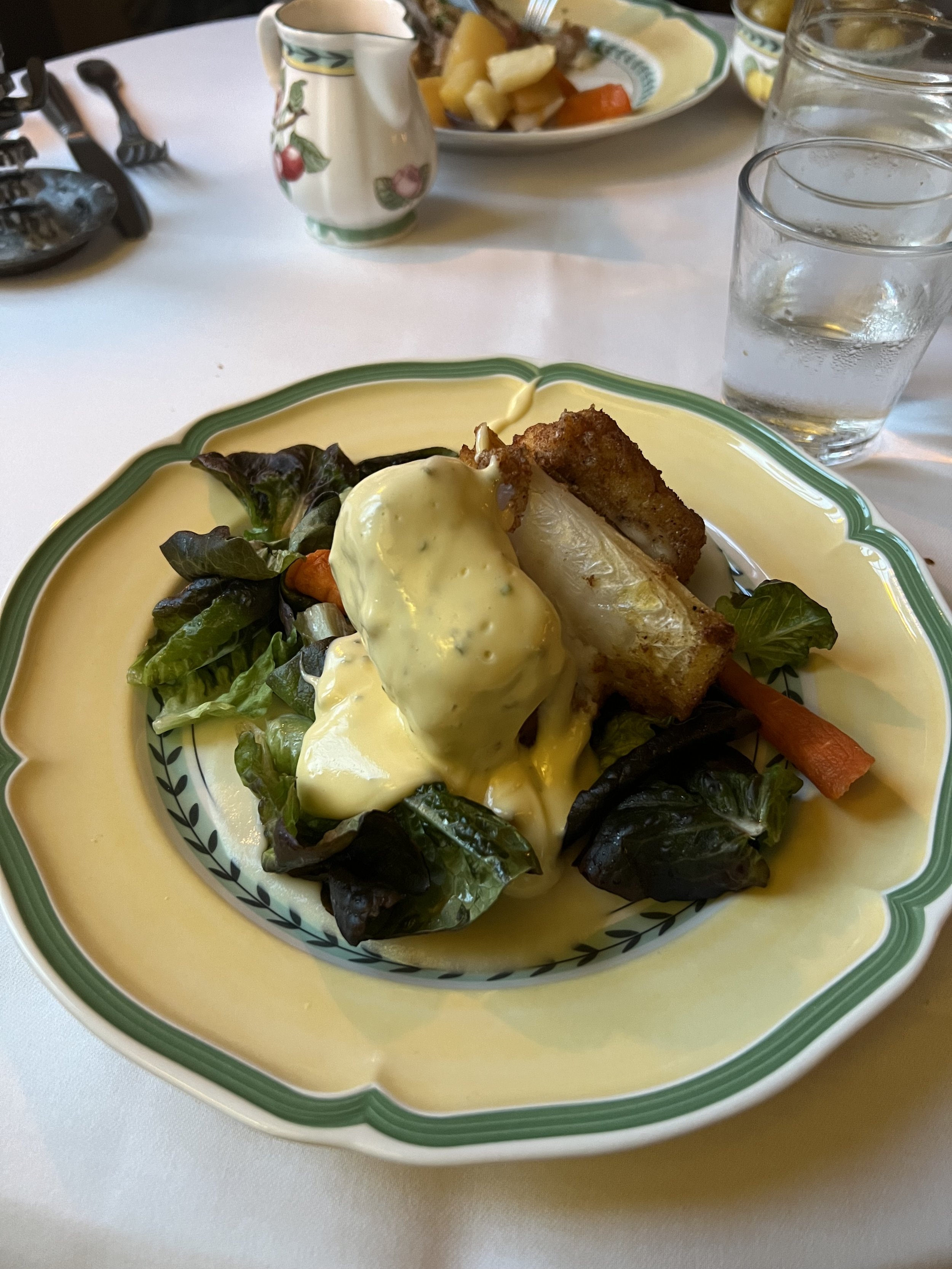
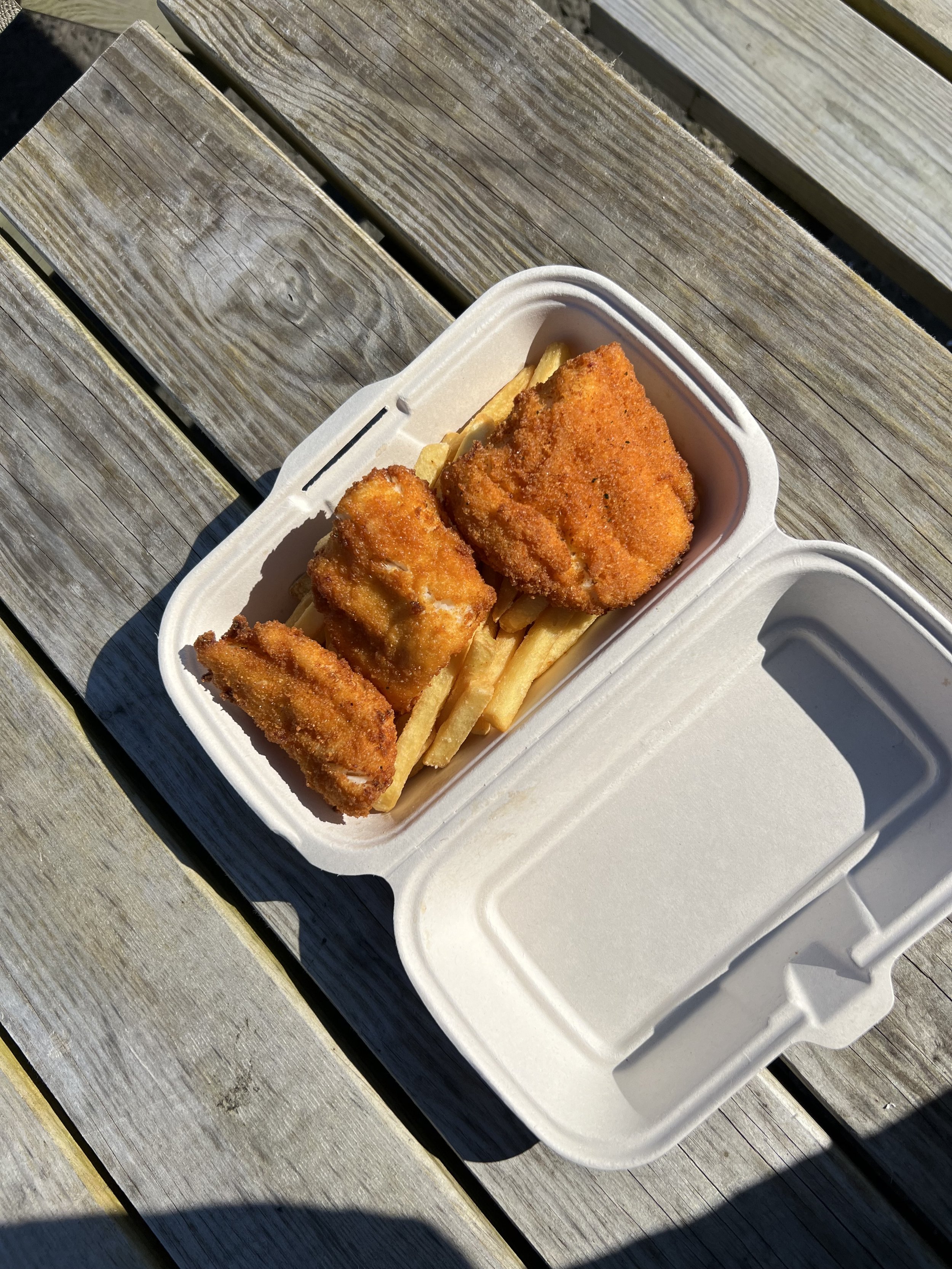
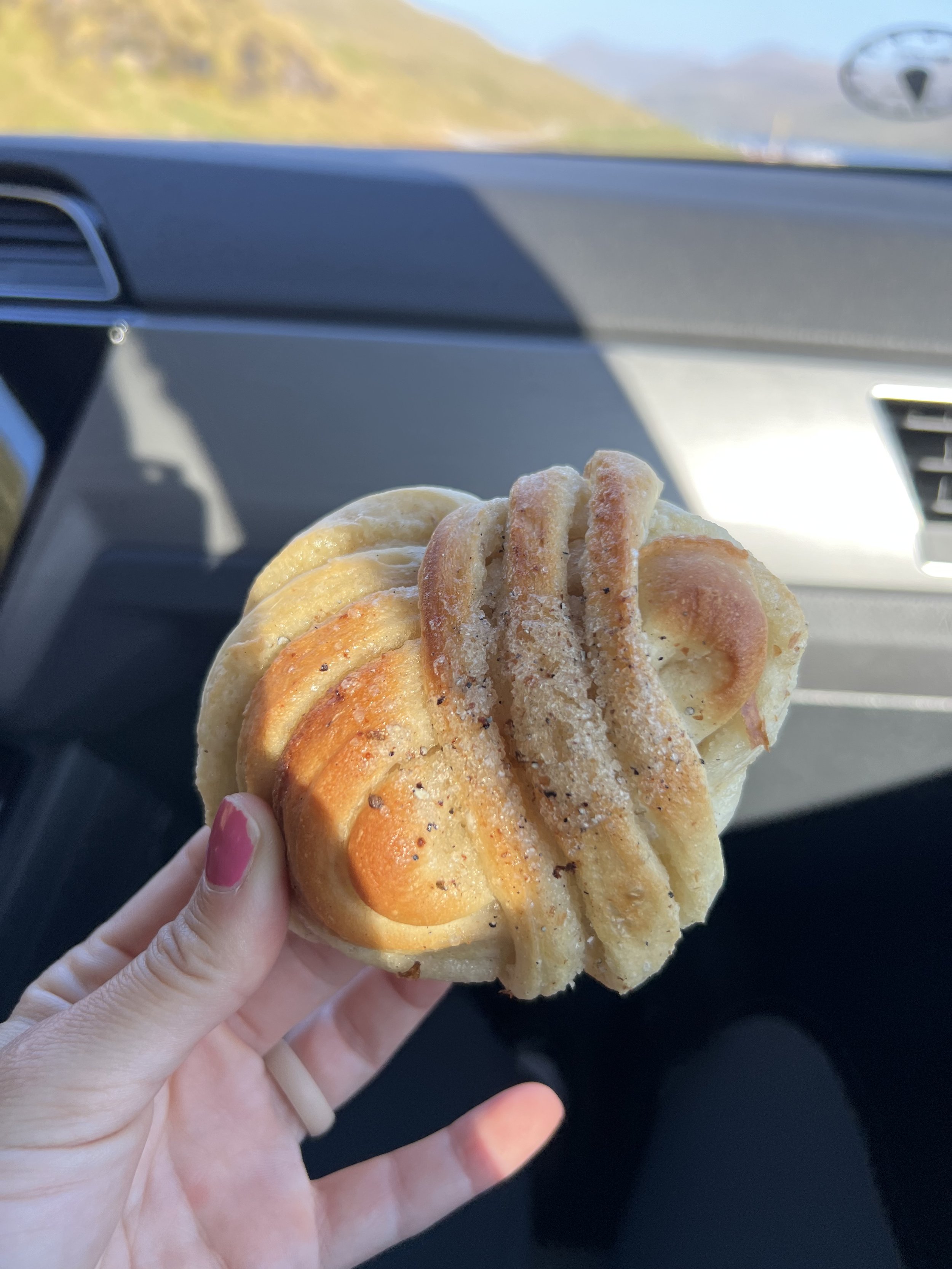
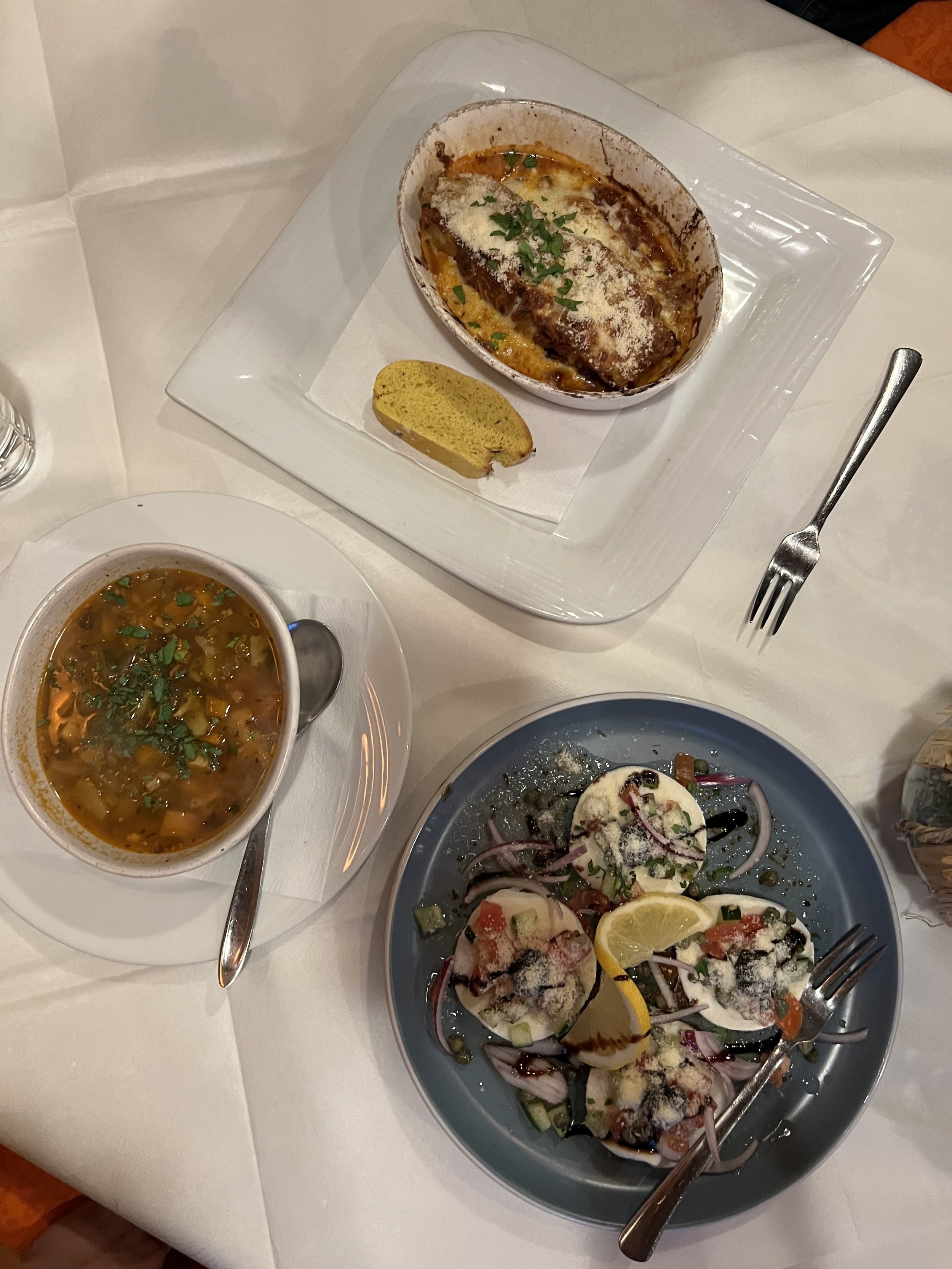
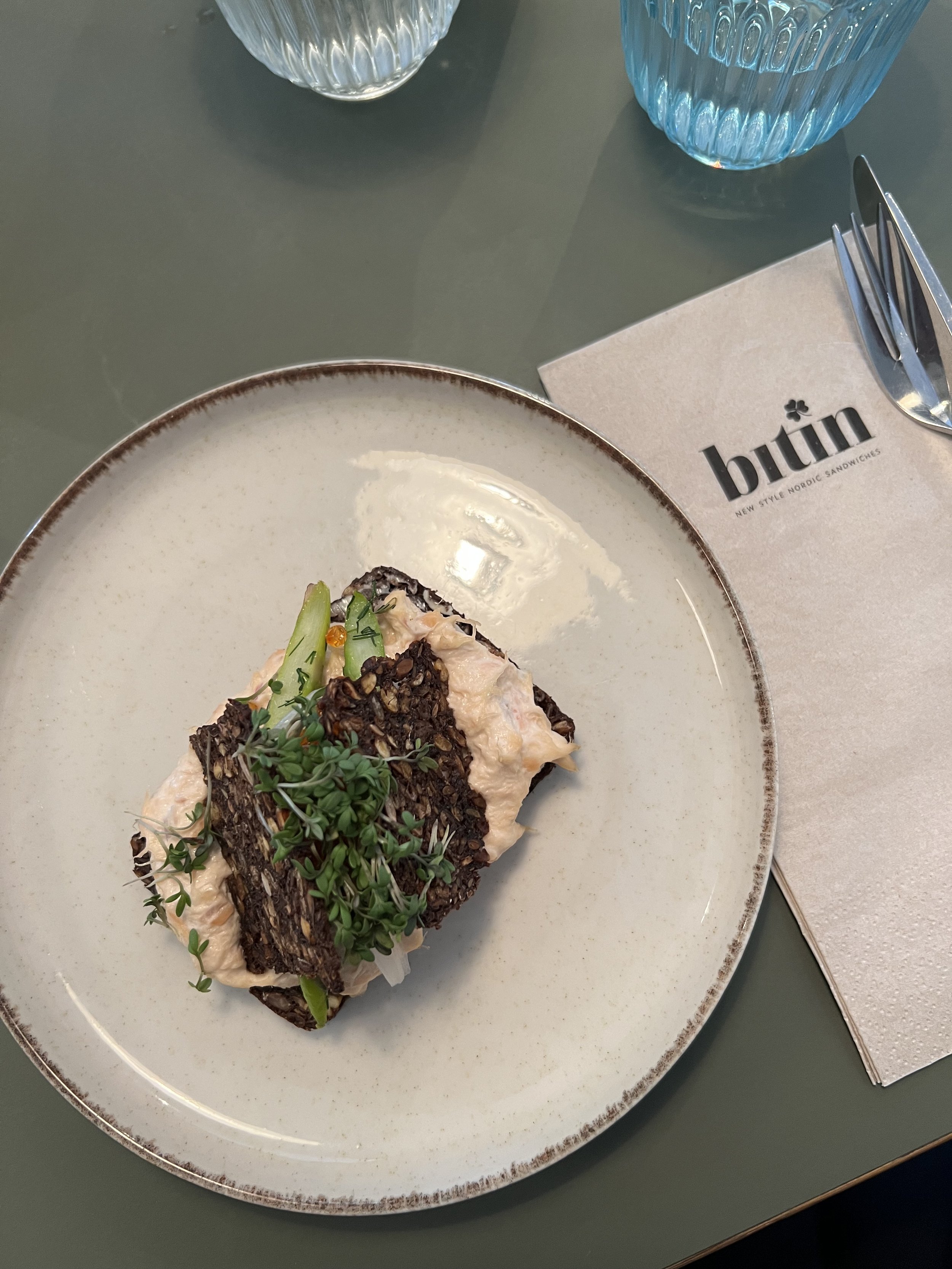

What to do:
1. Go on a Sea Cave Boat Tour
The Faroe Islands are known for their rugged cliffs, wild landscapes, and many, many waterfalls. They are also known for having spectacular sea caves!
A sea cave boat tour with RIB62 should 100% be on your list. The tour consisted of an hour and a half boat ride around the island and through some really amazing caves. The tour was a combo of speeding and slowly gliding through the wild ocean to admire the scenery around us. It was a great mix of adventure and ease. We even saw a few puffins and dolphins during our tour!
I typically get pretty nervous/seasick on boat rides. However, our RIB62 captains made me feel super safe and comfortable the whole time. They also had us jamming to really fun music during the ride.
I couldn’t recommend this tour more.
Book it here: https://guidetofaroeislands.fo/book-holiday-trips/caving-tour-hestur/
Location: Tour departs from the Gamlarætt Ferry Port
2. Rent a car and get out of Torshavn
Torshavn is a great city. There is so much beauty and history there, but the real beauty lies outside of the capital. You should rent a car to see as much as possible during your time in the Faroes.
We rented our car with Enterprise and I would highly recommend doing so. The pick up/drop off process was seamless and our car was clean and in great condition.
However, if you do not want to rent a car, then there are a number of great tours that offer pick up from your accomodations in Torshavn. Guide to the Faroe Islands is an excellent website to find a tour that fits your needs.
Here are a few great tours that offer pick up from Torshavn :
Outstanding 7 Hour "See It All" Faroe Islands Tour- https://guidetofaroeislands.fo/book-holiday-trips/the-full-day-see-it-all-faroe-islands-tour/
Incredible 8 Hour Guided Tour to Kalsoy & Kallur Lighthouse- https://guidetofaroeislands.fo/book-holiday-trips/day-tour-to-kalsoy-and-kallur-lighthouse
3 Waterfalls in 1 day | Múlafossur, Fossá & Saksun Waterfalls- https://guidetofaroeislands.fo/book-holiday-trips/waterfalls/
3. Marvel in the beauty of Múlafossur Waterfall
If you have seen any photos of the Faroes, you have likely seen Múlafossur Waterfall. It is basically the poster child of the Faroe Islands.
Due to the proximity to Vagar Airport, Múlafossur Waterfall is a great first place to stop when you arrive. The drive is only about 10 minutes from the airport. You will arrive at a small parking area and walk a trail for about a minute or so to the waterfall viewing area. It is truly a magnificent site to see.
If you land in the Faroes and the weather isn't great, then you also have the option to stop here right before your departure flight!
Address: Search for "View on Mullafossur and Gasadalur village" on the Google Maps App to find the parking area.
4. Go shopping for wool products
The Faroe Islands have more sheep living on the islands than residents. Faroe Island literally means “sheep island,” which was named by the Vikings when they arrived on the islands and found so many sheep. Due to the over 70,000 sheep living on the islands today, the Faroe Islands produce a lot of high quality wool goods.
There are so many beautifully handmade wool pieces to buy in the Faroes. Consider purchasing for yourself or bring home as a souvenir for a loved one.
Here are a few stores in Torshavn that sell gorgeous wool goods:
Guðrun & Guðrun
Føroya Heimavirkisfelag
Öström
5. Visit Saksun and Saksun’s Black Sand Beach
Saksun is a tiny, picturesque village with about 8 residents living in beautiful turf-roofed cottages. The village is surrounded by steep mountains and a lagoon that empties into the Atlantic Ocean.
If you want to explore the village up close along with Dúvugarðar Saksun Heritage Farm, there is an entry fee of 150dkk (about $22USD). However, you can wander outside of the village, hike to the waterfall, and visit the old church in Saksun for free.
We paid the entry fee to walk through the village and I personally didn’t find it worth spending the money. I thought the view overlooking the village is much better if you hike to the waterfall, which is free.
If you are visiting Saksun, plan your trip around low tide so you can also visit Saksun’s Black Sand Beach. During low tide, you can walk along the sand that leads to the Atlantic Ocean. It was truly so magical to see the wild landscapes, black sand, and bright blue ocean. Visiting this beach is free.
You can visit this website for the tide schedule: https://www.tideschart.com/Faroe-Islands/Streymoy/
Lastly, there is a hiking trail you can take from Saksun to the nearby village, Tjornuvik. It takes about 2 hours (one way) to complete this hike and is rated as moderate difficulty due to the elevation gain.
6. Walk the historic streets of Tinganes
Tinganes, in Torshavn, is a historic area of the city containing old parliament buildings. The parliament met in these turf-roofed houses for the first time during the Viking era. Tinganes is rumored to be one of the oldest parliamentary meeting places in the world.
Aside from being a section of the city filled with so much history, it is also gorgeous and makes a perfect Instagram worthy photo!
7. Drive around the world’s only underseas roundabout
The Eysturoyartunnilin is the world’s first and only underseas roundabout. Not only is the roundabout really cool to experience, there is also artwork created by the local artist Tróndur Patursson as you drive around it. It just just makes the whole drive a total vibe.
The tunnel connects the island of Streymoy to the island of Eysturoy and has been operational since 2020. It is very close to Torshavn and is definitely worth a visit (you will likely drive through it anyway if you plan on visiting Eysturoy or the northern islands). It is really cool.
Something to keep in mind- the tunnels in the Faroes are not free. The toll fees vary depending upon the tunnels you are driving through. The Eysturoyartunnilin is 175 DKK one-way (about $27USD), which I think is pretty expensive.
You don’t have to stop anywhere to pay for a toll when entering or exiting the tunnels. A photo will be taken of your license plate and you will be charged by your car rental company the toll fees.
8. Go Hiking
No trip to the Faroe Islands are complete without hiking at some point during your stay. There are many different trails you can explore from easy to more challenging.
Here are two hikes I did that I would recommend:
1. Hike to Bøsdalafossur Waterfall:
This hike is a must do when visiting because not only do you end at the Atlantic Ocean viewing the spectacular Bøsdalafossur Waterfall, you also encounter Lake Sørvágsvatn (The Lake Above the Ocean) and Trælanípa during your hike.
Visit my blog post for more info: www.placeswiththepeoples.com/blog/how-to-spend-a-day-in-the-faroe-islands
Difficulty: Easy
Location: Vagar Island
2. Gongutúrur / Hvithamar Trailhead
This is not a typical hike mentioned on other guides, which is surprising because the view is spectacular. The hike leads you to a magnificent view of Funningur village and the Funningsfjørður fjord and is definitely worth checking out.
What to Expect:
You will start the hike at the Gjáarskarð mountain pass (there is a parking lot)
The path is easy to follow- there are green arrow signs leading you in the direction to take
This hike consists of a three parts- the first part leads you to the Hvíthamar ridge viewpoint (takes about 10 mins and is flat and easy), the second part is a really steep climb to the Skeggjanøv viewpoint (takes about 20 minutes uphill), then the third is a steep walk down along the fence back to your parking area. You basically make a triangle shape. There is a photo at the start of the trail explaining the course.
This hike is VERY muddy so make sure you are wearing a pair of waterproof, sturdy shoes.
Difficulty: First Section (Easy) + Second and Third (Moderate)
Location: Eysturoy
Here are a few hikes I wanted to do but didn’t have time for:
Dunnesdrangar- Vágar Island; Easy difficulty
Ásmundarstakkur- Suðuroy Island; Moderate difficulty
Kallur Lighthouse- Kalsoy Island; Easy difficulty
9. Have a locally brewed beer at OY Brewing
OY Brewing is a lovely brewery in Torshavn that brews their beers onsite. It is the perfect low-key spot to settle down after a long day of exploring and driving. They also have a schedule on their website with live entertainment and events if you are looking for a more up-beat experience.
OY Brewing also is a restaurant and they are serving up some seriously good food. Their pulled pork and spicy cucumber salad is elite.
Address: 4 Falkavegur, Tórshavn 100, Faroe Islands
10. Eat Salmon
The Faroe Island salmon farming industry is one of the most successful in the world. They are known for raising salmon naturally without any antibiotics, producing a high quality and favorable fish.
It was pretty cool driving around the islands and seeing the salmon farms in the water.
So while you are in the Faroe Islands (if you are a salmon lover) you have to give it a try. It was really so delicious.
Seasonal things to do:
11. See the Puffins (May-August)
Puffins are adorable seabirds that migrate to the Faroe Islands during the summer months. Seeing the puffins are one of the top attractions that bring tourists and photographers from all over to observe them. Sadly, the puffins were mostly all gone when I arrived in September. We saw 1 puffin in the water during our sea cave tour.
The best places to view the Puffins are:
Mykines Island- the westernmost of the Faroe Islands and the most popular viewing site for the puffins. During the summer months, you can take the ferry from Sørvágur to Mykines. There are also a number of tours that will take you to the island. The boats sometimes get cancelled due to rough waters so if you do want to see the Puffins, be sure to schedule this excursion on one of your first days in case you have to reschedule.
Nolsoy- is another great spot to view the Puffins. It is only a 20 minute ferry ride away from Torshavn. Some of the locals argue that it is better to see the puffins on Nolsoy than Mykines, but you can decide that for yourself!
12. Admire the Northern Lights (September- March)
The Northern Lights are visible in the Faroe Islands (sadly we didn't see them during our stay, but I hope you do!)
The best time of the year to see this phenomenon is from September to March, with November to February having the highest chances.
The Northern Lights are more visible the further away you are from city light. It is said these towns are the best places to view from: Gásadalur, Tjørnuvík, Eiði, Vestmanna, Funningur, Saksun, Gjógv, Klaksvík, and Viðareiði
I would suggest downloading the Aurora app, which will let you know your chances of seeing the Northern Lights so you can plan your night accordingly.
My Review of the Faroe Islands:
What I loved:
The wild landscapes- This place is truly one of the most beautiful places I’ve ever been. There is nothing quite like seeing massive cliffs, bright blue water, and waterfalls in real life.
Limited tourists- The Faroe Islands are definitely more challenging to get to than countries with similar landscapes like Iceland or Norway so there were significantly less tourists. I am not a fan of crowds so this was so nice to be somewhere and not feel overwhelmed with a million other tourists around.
The wildlife- Seeing all the sheep everywhere was such a fun part of this trip. We encountered sheep on every drive and every hike and it was just really cool to see them in their natural habitat.
Peace and quiet- I am naturally a very anxious person and I truly felt 99.9% my anxiety slip away while being here. It just felt so peaceful being somewhere so remote.
Safety- The Faroe Islands have virtually no crime so it was really nice being somewhere that I didn’t have to worry about watching my back the whole time.
What I didn’t like so much:
It is expensive- I would say the Faroe Islands were one of the more expensive European countries I’ve been to. We felt our meals were pricier than we would typically spend so definitely be mindful of the budget you set!
The one lane roads- Driving in the Faroes are not for the faint of heart. Some of the roads, especially in Northern Streymoy and Eysturoy Islands, were one lane, two way roads that scaled the cliffs. It was pretty scary at times and we had really nice weather too. I couldn’t imagine how scary it would have been in rain or fog.
It was hard to pack for- The weather is very unpredictable so packing for this trip was a challenge. I wanted to be prepared for every weather scenario (rain, cold, warm, sunny, wind, etc) so I ended up packing way more than I typically would for a 3 night trip. I don’t like to check a bag when I travel so my carry on was barely able to zipper! If you check a bag, then you will be fine.
That I didn’t stay long enough- We only had 2.5 days in the Faroes and I wish we had more time!
Would I go back?
Absolutely- it is truly a special place and should be on everyone’s bucket list.
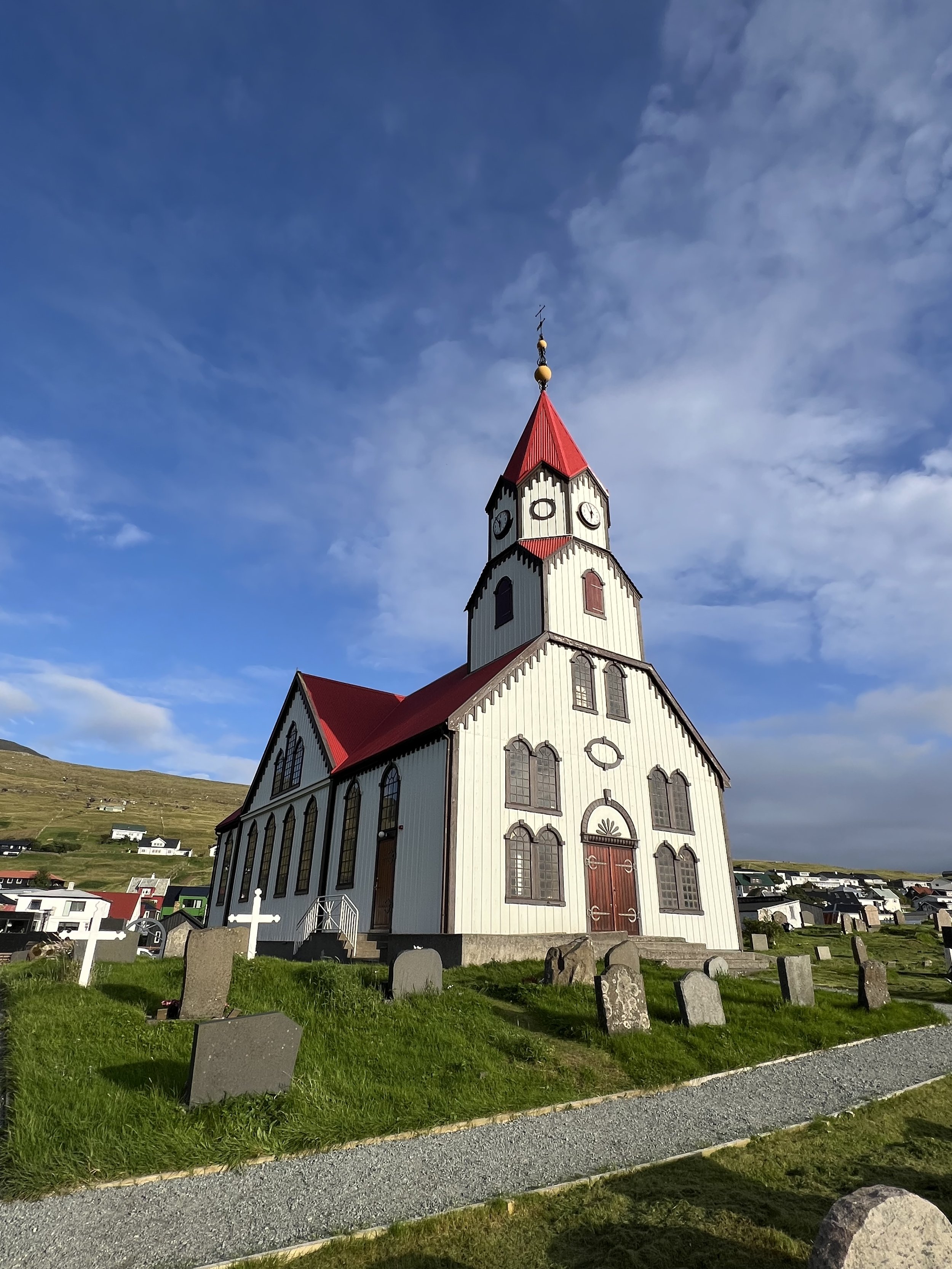


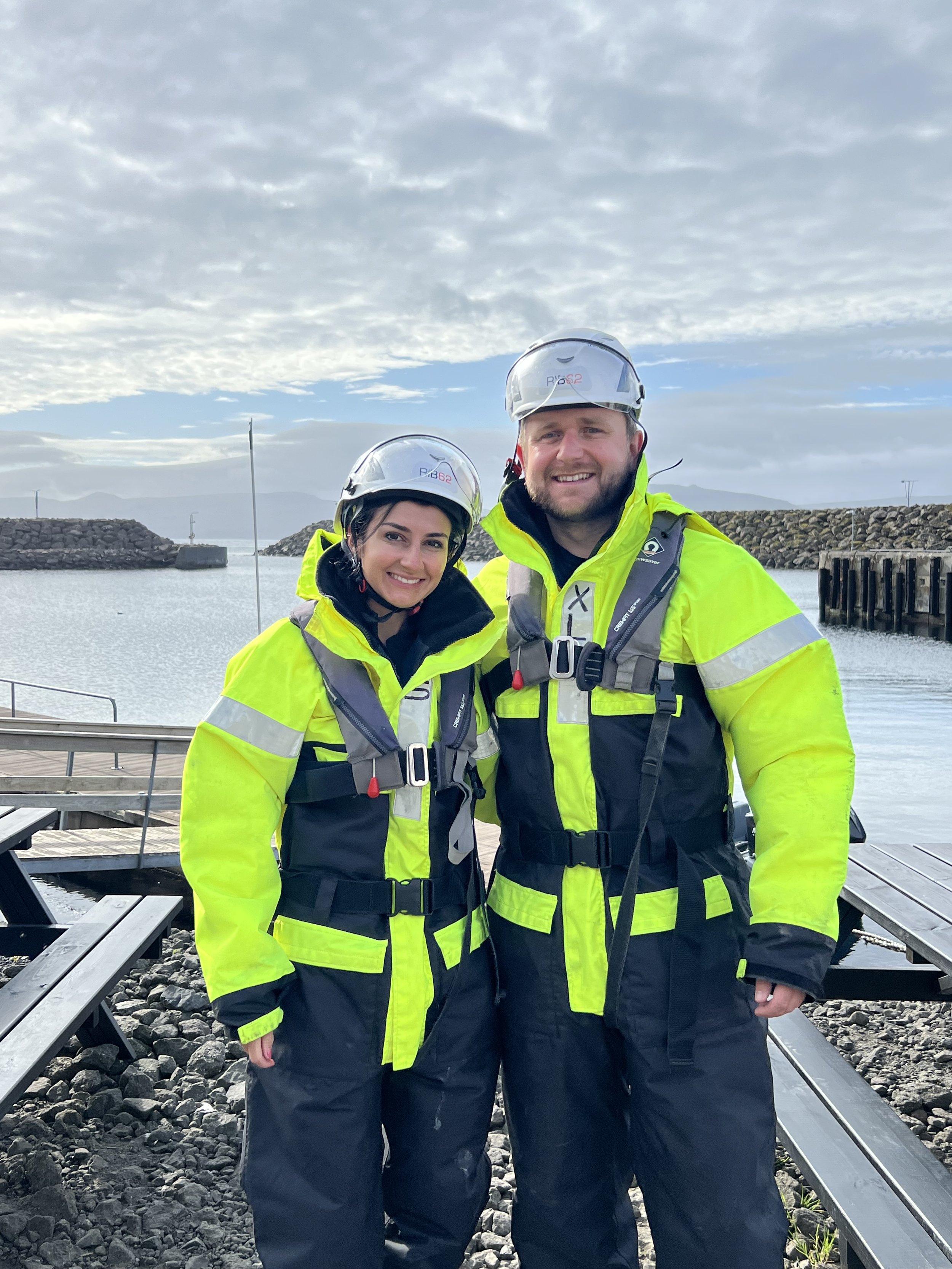
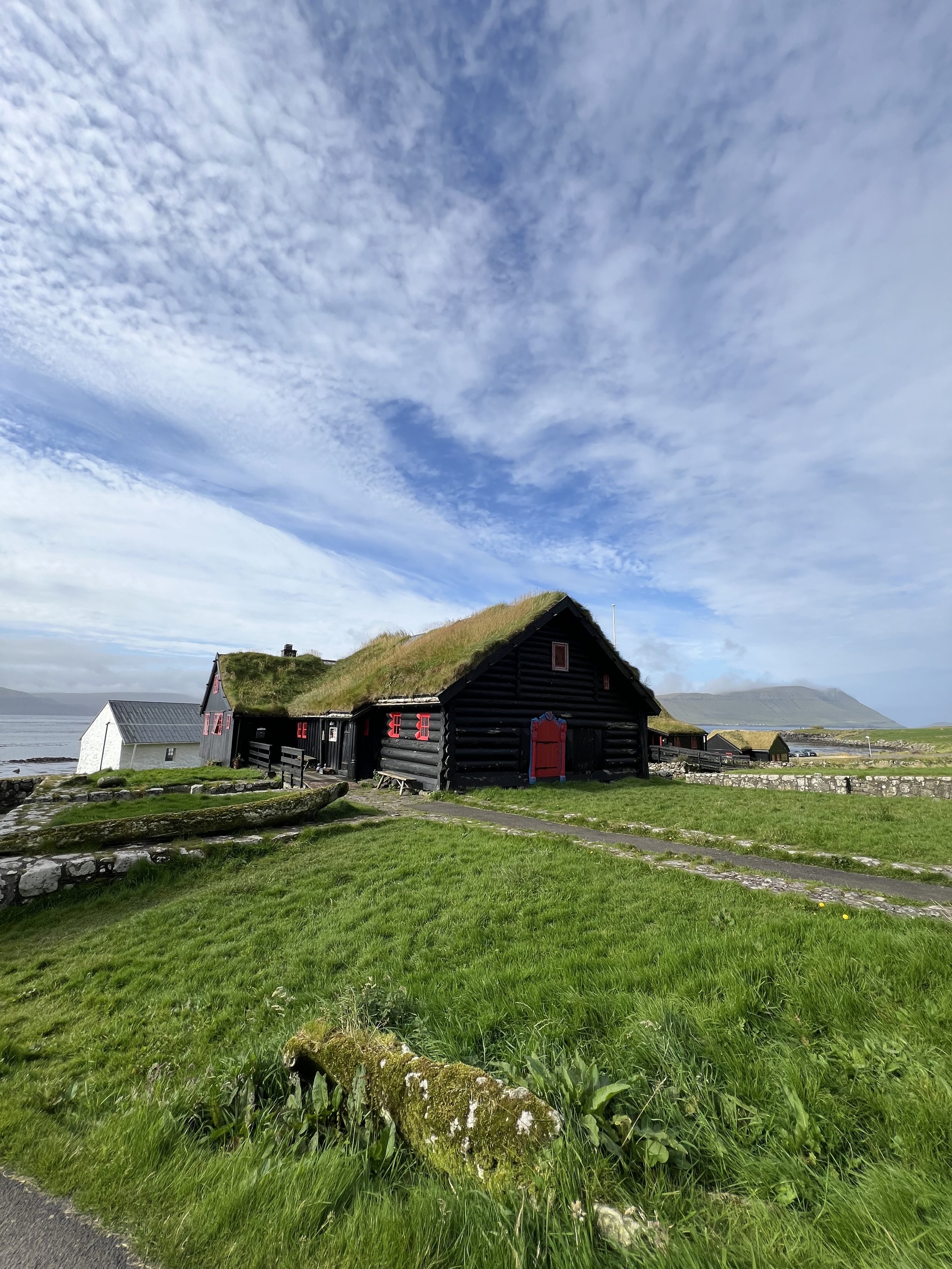
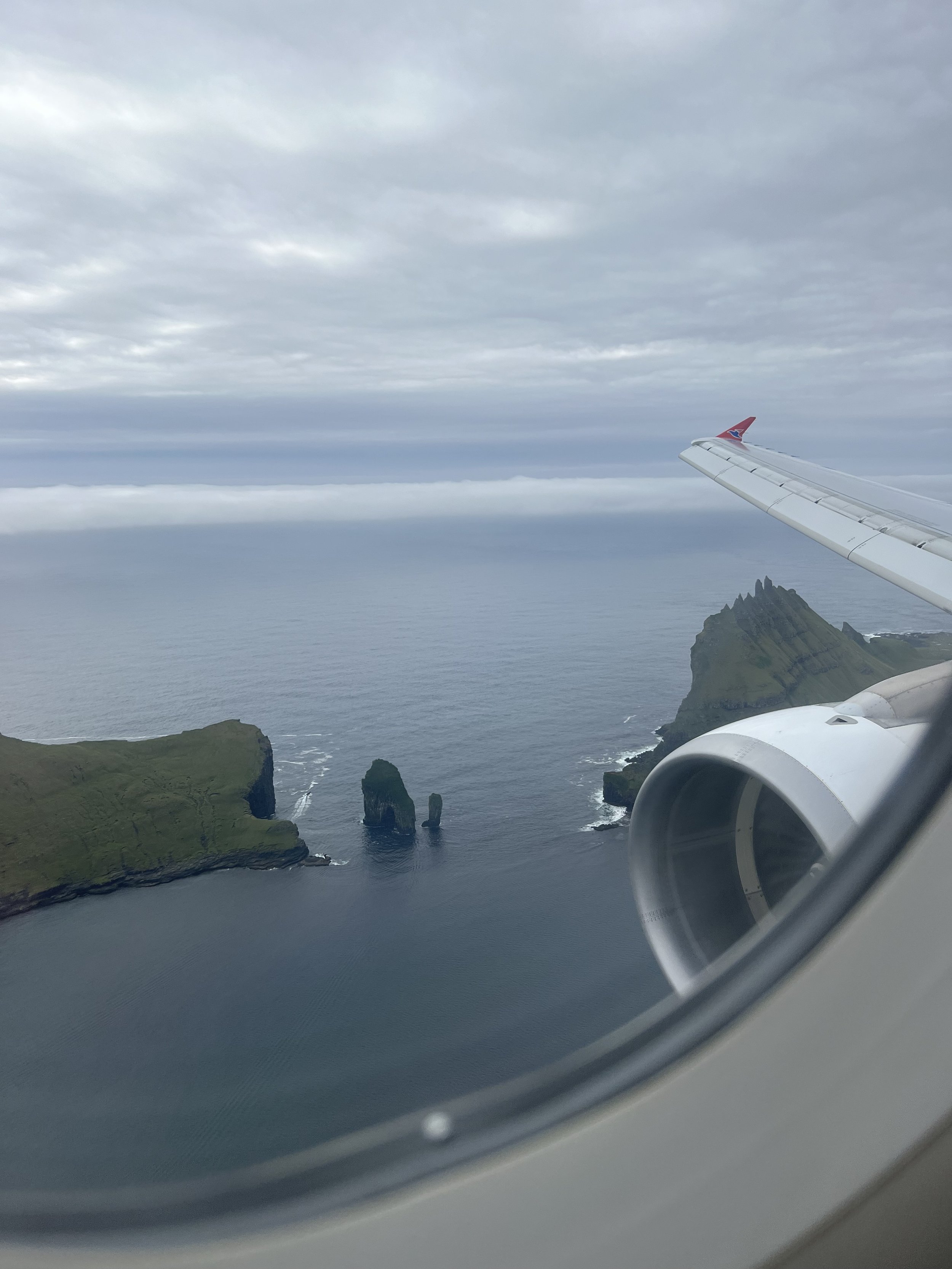
FAQs
-
It depends on how much you want to see! The islands are spread pretty far apart and the weather is unpredictable so keep that in mind when scheduling your trip.
We stayed for 2.5 days and we were able to cover parts of Vagar, Streymoy and Eysturoy Islands. We luckily had nice weather the whole time so we didn't have any travel delays or cancelled tours.
If you want to visit the northern or southern islands or give yourself a buffer for bad weather, I would suggest staying for 4-5 days.
-
It depends what you are looking for!
Summer is typically the best time to visit for warm, dry weather, peak wildlife viewing (Puffins), and longer days. Accommodations are more expensive during this time so be mindful of that.
Winter is the best time to visit if you want the best chance to see the Northern Lights. The islands will likely be covered in snow during the time. It is low season so accommodations and rental cars are at a bargain.
Spring/Fall is shoulder season and you can find some relatively stable weather. However, some tours close September-April so be sure to keep that in mind. If you are coming late spring (April/May), you may be there for the arrival of the puffins. If you are coming late September/October, you may have a chance at seeing the Northern Lights.
-
The Faroe Islands weather is truly as wild as the landscapes. It can be sunny one moment and then raining the next so dressing in layers is essential.
Here is a recommended list of clothes to pack (I visited in September when the weather was around 55 degrees F (12 degrees C) so definitely modify if you are traveling in colder/warmer months):
Rain jacket
Warm layer- Sweater/ Sweatshirt/ long sleeve layer
Lighter layer- short sleeve shirt/ tank shirt
Waterproof pants (if you don’t want to bring waterproof pants, then I suggest bringing an extra pair of normal long pants to change into incase you get super wet)
Socks and then some extra
Waterproof boots
Warm hat to cover your ears if it is a windy day
Gloves
-
The national language of the Faroe Islands is Faroese.
However, English is widely spoken and understood. We had no issues communicating in English during our stay.
-
The official currency in the Faroe Islands is the Faroese króna.
The Faroes are very credit card friendly so you will not need cash during your stay.
FYI- American Express credit cards are rarely accepted anywhere in the Faroe Islands. Sadly, we learned this the hard way! If you are an AMEX customer, make sure you bring a Visa or Mastercard credit card instead so you won’t have any payment issues.



